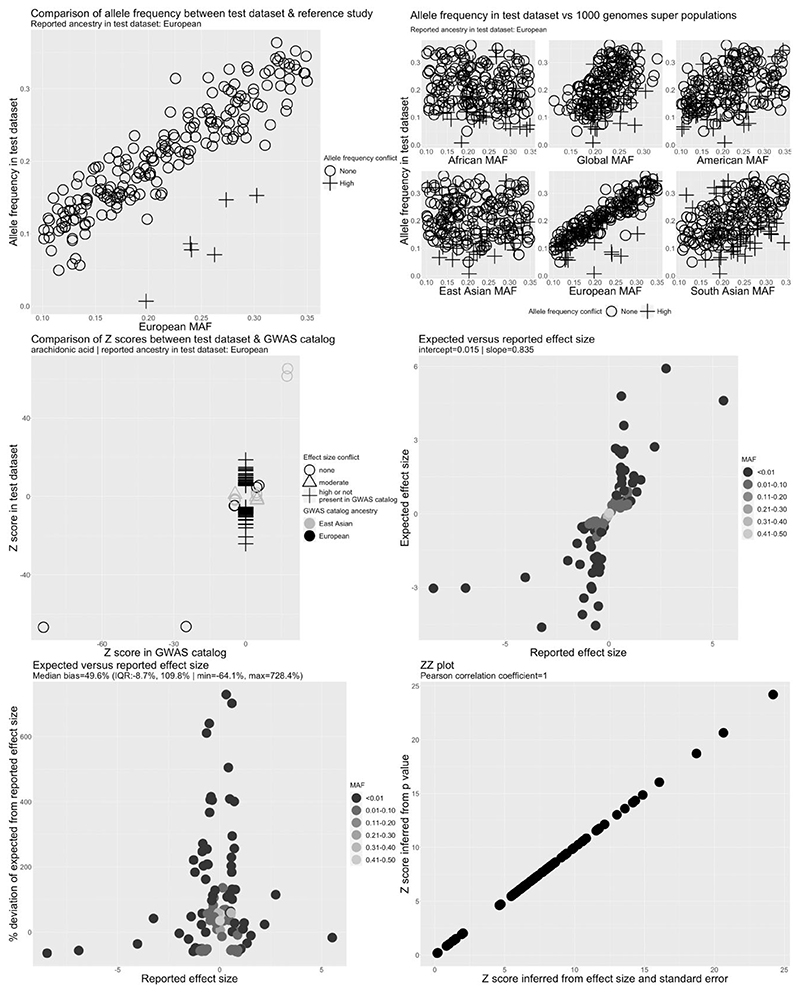Figure 3.
Quality control report for genetic summary data from a genome-wide association of arachidonic acid in the Cohorts for Heart and Aging Research in Genomic Epidemiology Consortium (CHARGE). Allele frequencies are expected to be <0.50. A high allele frequency conflict is defined as an allele frequency of >0.58 in the test data set (CHARGE in this example) or if the allele frequency differs by >10 points between the test and reference data sets. Moderate allele frequency conflicts are allele frequencies of >0.50 but S0.58. Effect size conflicts are defined as different directions of effect, represented by signed z-scores, between the test data set (CHARGE in this example) and the GWAS catalogue. The level of conflict is further labelled as ‘high’ if the P-value for the association is <0.0001 in both the GWAS catalogue and the test data set, and as ‘moderate’ if not. Effect allele frequency conflicts with the GWAS catalogue are declared if the effect allele frequency is not greater (or less) than 0.5 in both data sets. The level of conflict is further labelled as high if the minor allele frequency is S0.4 in both data sets, and as moderate if not. Effect allele frequency conflicts are also defined as high if the effect allele frequency differs by >10 points between the test and reference data sets. EAF, effect allele frequency; GWAS, genome-wide association study; MAF, minor allele frequency

